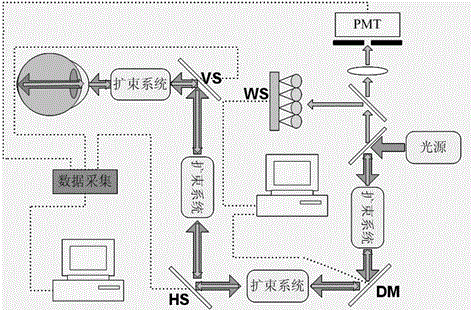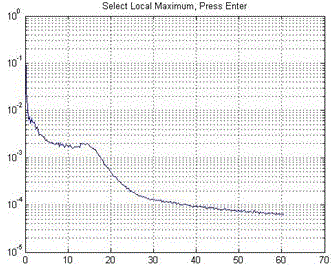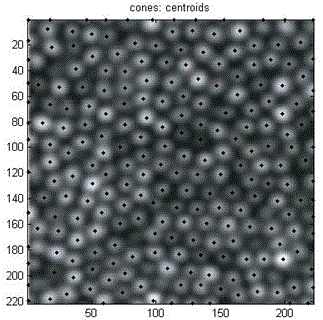A Calculation Method of Cone Cell Density Based on Image Recognition
A calculation method and image recognition technology, applied in the field of cone cell density calculation, can solve the problems of no automatic cone cell counting density, limited application, labor consumption, etc., achieve a high degree of automation, avoid result deviation, and improve detection efficiency. Effect
- Summary
- Abstract
- Description
- Claims
- Application Information
AI Technical Summary
Problems solved by technology
Method used
Image
Examples
Embodiment Construction
[0028] Embodiments of the present invention will be further described below in conjunction with accompanying drawings:
[0029] Such as Figure 1-Figure 4 As shown, the present invention discloses a method for calculating the density of cone cells based on image processing. The method utilizes a fundus adaptive confocal laser scanning ophthalmoscope to image fundus cone cells, and based on computer vision, the images are identified, analyzed and counted, and then counted. Cones, to analyze cone density. Said method comprises the following steps:
[0030] (1) Obtain pictures of retinal cones.
[0031] Turn on the power, enter the subject's personal information, and the subject sits in front of the fundus adaptive confocal laser scanning ophthalmoscope, with the lower jaw placed on the jaw rest.
[0032] Instruct the subject to stare at the red fixation light in the instrument, adjust the focus to make the cone cell picture of the fundus scanned and captured the clearest, and...
PUM
 Login to View More
Login to View More Abstract
Description
Claims
Application Information
 Login to View More
Login to View More - R&D
- Intellectual Property
- Life Sciences
- Materials
- Tech Scout
- Unparalleled Data Quality
- Higher Quality Content
- 60% Fewer Hallucinations
Browse by: Latest US Patents, China's latest patents, Technical Efficacy Thesaurus, Application Domain, Technology Topic, Popular Technical Reports.
© 2025 PatSnap. All rights reserved.Legal|Privacy policy|Modern Slavery Act Transparency Statement|Sitemap|About US| Contact US: help@patsnap.com



